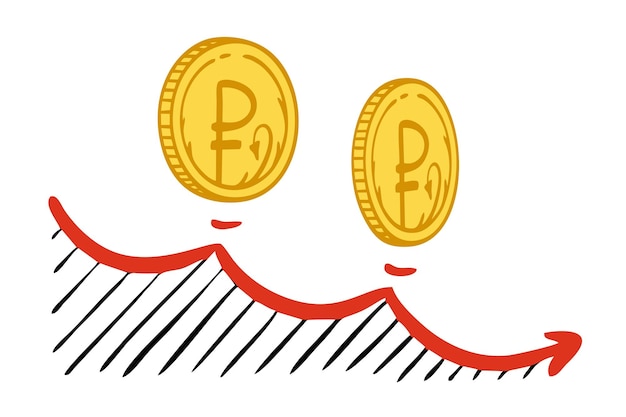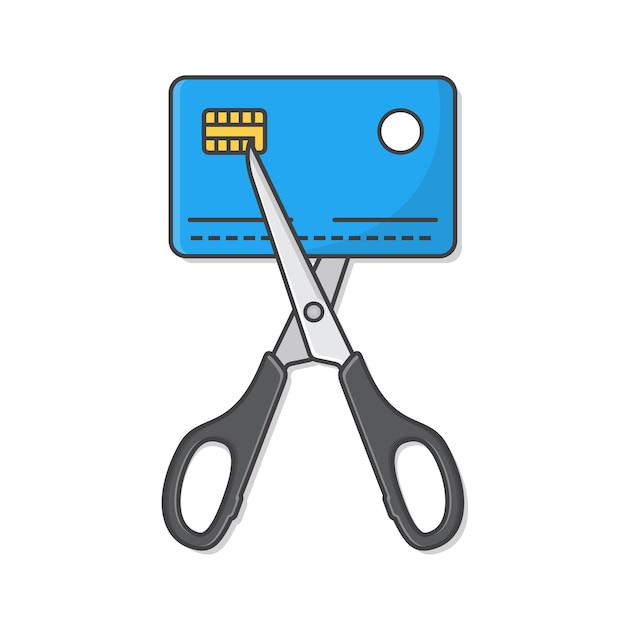Budgeting Strategies: Navigating a 4% Inflation Increase

How to budget effectively when facing a 4% increase in inflation involves reassessing spending habits, prioritizing needs over wants, and exploring strategies to increase income and savings to offset the rising costs.
Navigating personal finances can feel like walking a tightrope, especially when inflation rates climb. A 4% increase in inflation might seem manageable, but it can subtly erode your purchasing power. This article provides practical strategies on how to budget effectively when facing a 4% increase in inflation, ensuring you maintain financial stability and achieve your financial goals.
Understanding the Impact of a 4% Inflation Increase
Inflation refers to the rate at which the general level of prices for goods and services is rising, and subsequently, purchasing power is falling. A 4% inflation increase means that, on average, things cost 4% more than they did a year ago. Understanding this impact is the first step in learning how to budget effectively when facing this financial challenge.
This increase affects different aspects of your budget differently, from groceries and transportation to housing and healthcare. Recognizing where you’ll feel the pinch most is crucial for developing targeted budgeting strategies.
The Ripple Effect on Your Wallet
When inflation rises, your fixed income stays the same, but the cost of everything you buy increases. This can strain your budget and require adjustments to keep your finances on track.
- Reduced Purchasing Power: Your dollar buys less than before.
- Increased Living Expenses: The cost of daily necessities goes up.
- Decreased Savings: Less money available for savings and investments.
Adaptability is key. By understanding how the 4% inflation increase affects your finances, you can create a budget that minimizes its impact and helps you maintain your financial well-being.

Reassessing Your Current Budget
The first step in weathering a 4% inflation increase is to take a hard, honest look at your current spending habits. What are you spending money on, and where can you cut back? Reassessing your budget allows you to prioritize needs and identify areas where you can make adjustments.
Gather all your financial information, including bank statements, credit card bills, and receipts to get a clear picture of your income and expenses.
Tracking Your Spending
Tracking your spending is an essential part of understanding where your money goes each month. There are several tools and methods that can help you monitor your expenses effectively.
- Budgeting Apps: Apps like Mint, YNAB (You Need A Budget), and Personal Capital can automatically track your spending and categorize your expenses.
- Spreadsheets: Create a simple spreadsheet to manually record your income and expenses. This method gives you full control and customization.
- Budgeting Notebook: Keep a small notebook and jot down every purchase you make. Review it at the end of the week to identify spending patterns.
Once you have a comprehensive understanding of your spending habits, you can begin to identify areas where you can cut back and reallocate funds. This is a crucial skill when learning how to budget effectively when facing inflation increases.
Prioritizing Needs Vs. Wants
Distinguishing between needs and wants is a fundamental principle of effective budgeting, especially when dealing with inflation. Needs are essential expenses that are necessary for survival and well-being, while wants are non-essential items that you could live without.
Identifying needs and wants helps you focus your spending on what truly matters and cut back on discretionary expenses. This approach allows you to navigate the challenges of a 4% inflation increase while maintaining your financial stability.
Strategies to Differentiate Needs from Wants
Separating needs from wants can be challenging, but here are some strategies to help you prioritize:
- Apply the “30-Day Rule”: If you want something, wait 30 days before buying it. If you still want it after 30 days, it might be worth considering.
- Assess Necessity: Ask yourself if the item is essential for your well-being or job.
- Compare Alternatives: Look for cheaper alternatives that satisfy the same purpose.
By consistently evaluating your spending, you can make informed decisions that align with your financial goals and help you manage the impact of inflation.
Cutting Down on Discretionary Spending
Discretionary spending includes non-essential items and activities that you can reduce or eliminate without significantly impacting your quality of life. Identifying and cutting down on these expenses can free up funds to offset the effects of a 4% inflation increase.
This involves making conscious choices about where your money goes, opting for cost-effective alternatives, and finding ways to enjoy life without breaking the bank.

Practical Ways to Reduce Discretionary Expenses
Reducing discretionary spending requires a bit of creativity and willingness to change your habits. Here are some practical strategies to help you cut back:
One area to consider is dining out. Preparing meals at home can significantly reduce expenses compared to eating at restaurants or ordering takeout. Explore new recipes, meal plan, and maximize your grocery budget.
- Cancel Unused Subscriptions: Review your monthly subscriptions and cancel those you no longer use or need.
- Shop Around for Insurance: Compare rates from different insurance providers to ensure you are getting the best deal.
- Limit Entertainment Expenses: Find free or low-cost entertainment options, such as attending local events or borrowing books from the library.
By implementing these strategies, you can reallocate funds to essential expenses and savings, enhancing your ability to effectively manage your budget during inflationary periods.
Finding Ways to Increase Income
Increasing your income can provide a buffer against the rising costs associated with a 4% inflation increase. Exploring opportunities to earn more money can alleviate financial stress and improve your overall financial stability.
Whether it’s through a side hustle, negotiating a raise, or pursuing a new career path, increasing your income can help you maintain your standard of living and achieve your financial goals.
Strategies to Boost Your Earnings
Boosting your earnings doesn’t always require a complete career change. Here are some strategies to increase your income:
- Negotiate a Raise: Research industry standards and present a compelling case for a raise to your employer.
- Freelance or Side Hustle: Utilize your skills and talents to offer freelance services or start a side business.
- Invest in Education: Acquire new skills or certifications to increase your marketability and earning potential.
By actively pursuing opportunities to earn more, you can effectively counteract the impact of inflation and improve your financial outlook.
Adjusting Your Savings and Investment Strategies
When inflation rises, it’s essential to re-evaluate your savings and investment strategies to ensure your money is working effectively for you. Adjusting your approach can help you preserve and grow your wealth, even in an inflationary environment.
This could involve exploring higher-yield savings accounts, diversifying your investment portfolio, and considering inflation-protected securities.
Protecting Your Savings and Investments
Protecting your savings and investments during inflation requires a strategic approach. Some effective strategies include:
- High-Yield Savings Accounts: Look for savings accounts that offer competitive interest rates to outpace inflation.
- Diversification: Spread your investments across different asset classes to reduce risk and increase potential returns.
- Inflation-Protected Securities: Consider investing in Treasury Inflation-Protected Securities (TIPS) to safeguard your savings against inflation.
By making informed decisions about your savings and investments, you can mitigate the impact of inflation and achieve your long-term financial goals.
Reviewing and Adjusting Regularly
Creating a budget isn’t a one-time task; it’s an ongoing process that requires regular review and adjustments. Economic conditions, personal circumstances, and financial goals can change over time, so it’s essential to adapt your budget accordingly.
Setting aside time each month to review your budget, track your progress, and make necessary adjustments ensures that your financial plan remains relevant and effective.
Tips for Continuous Budget Management
To maintain an effective budget in the face of inflation and changing circumstances, consider the following tips:
- Monthly Review: Dedicate time each month to review your budget, track your spending, and assess your progress.
- Set Financial Goals: Establish clear financial goals and regularly assess your progress towards achieving them.
- Stay Informed: Keep up-to-date with economic news and trends that may impact your budget and financial plans.
Budgeting is a critical skill in adapting to financial changes. By staying proactive and adaptable in your budget management, you can effectively navigate financial challenges, and reach your goals.
| Key Point | Brief Description |
|---|---|
| 💰 Reassess Budget | Identify areas where you can cut back and save money. |
| ✅ Prioritize Needs | Focus on essential expenses and reduce non-essential spending. |
| 📈 Increase Income | Explore opportunities to earn more, such as a side hustle or raise. |
| 🛡️ Adjust Savings | Optimize savings and investments to outpace inflation. |
Frequently Asked Questions
▼
Inflation is the rate at which the general level of prices for goods and services is rising, reducing your purchasing power. It means you need more money to buy the same items, straining your budget if your income doesn’t increase proportionally.
▼
Use budgeting apps like Mint or YNAB, create a spreadsheet to manually record expenses, or keep a budgeting notebook. Regularly review to understand where your money goes and identify areas for potential savings.
▼
Needs are essential expenses like housing, food, and transportation required for survival. Wants are non-essential items such as entertainment or dining out. Prioritizing needs over wants helps you allocate your resources efficiently.
▼
Yes, Treasury Inflation-Protected Securities (TIPS) are designed to protect your savings against inflation. They adjust their principal value based on changes in the Consumer Price Index (CPI), safeguarding your investment.
▼
It’s best to review your budget at least monthly to track spending and adjust for any unexpected expenses or changes in income. Regular reviews ensure your budget remains aligned with your financial goals.
Conclusion
Effectively managing your budget during a 4% inflation increase requires mindful spending, strategic financial adjustments, and proactive income-boosting efforts. By reassessing your budget, prioritizing needs, and adjusting your savings and investment strategies, you can navigate these financial challenges with confidence. Stay adaptable, remain informed, and continue to make smart financial decisions to safeguard your economic well-being.





